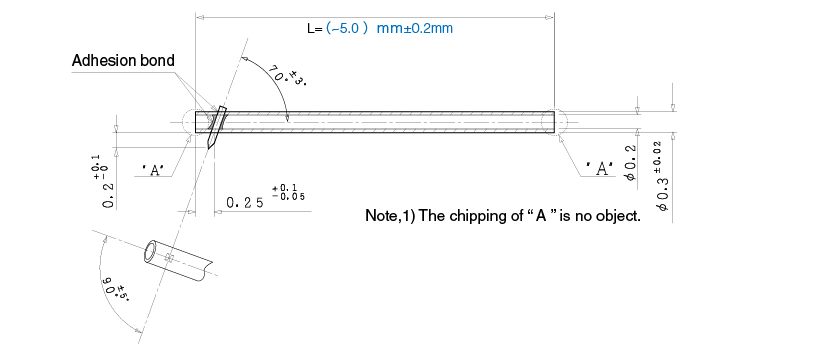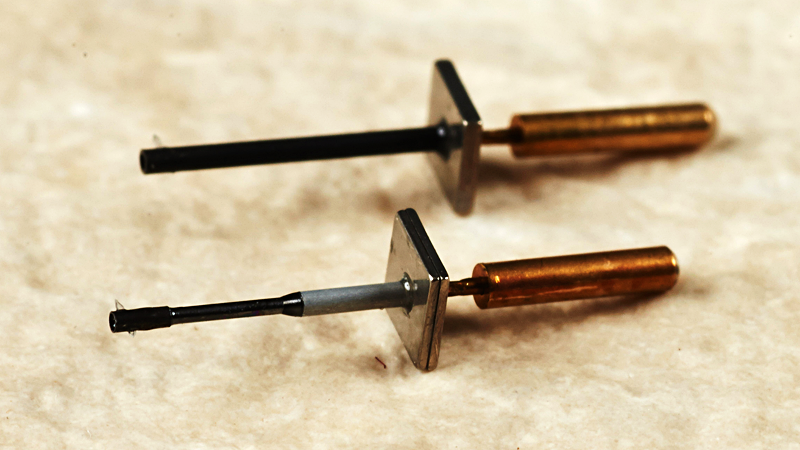
The stylus cantilever of a record cartridge, like the stylus itself, is an important part of the vibration system and necessary in order to transmit the vibrations accurately from the record to the stylus.
A variety of materials such as aluminum, sapphire, beryllium and boron are used to make stylus cantilevers of different shapes and dimensions. The lighter and stiffer the material, the better and more accurately the stylus cantilever can transmit vibration.
In today's high-end cartridges, precision is also required for the materials, processing, and assembly of magnetic circuit parts as well as the suspension mechanism connected to the stylus cantilever.
Stylus cantilever for analog record types and features
Aluminum Pipe
Aluminium has a low relative density, and the stylus tip is press-fit, so it picks up the groove vibrations with a stable and accurate trace performance.
| OD : φ0.5 ±0.02 ID : φ0.4 ±0.02 |
 |
|---|---|
| OD : φ0.6 ±0.02 ID : φ0.5 ±0.02 |
|
| L : 6.0 ±0.2 |
Boron Rod
Large elastic modulus, high specific rigidity, and speedy sound transmission. The tip is fixed with adhesive due to fragility and limits in processability. Cost performance is outstanding.
| OD : φ0.28 ±0.02 |  |
|---|---|
| L : 6.0 ±0.2 |
Zirconia Pipe
Because the material's relative density is comparatively high at 6.0, we make full use of our technology to process it into a pipe shape. This stylus cantilever plays a charming sound that is different from other materials.
| OD : φ0.3 ±0.02 ID : φ0.2 ±0.02 |
 |
|---|---|
| L : 5.0 ±0.2 | |
| Surface finish : Grinding |
Sapphire Rod
Because the sapphire stylus cantilever is very rigid, it accurately transmits the vibration of the stylus tip and, compared to metal stylus cantilevers, a clearer sound can be enjoyed.
| OD : φ0.3 ±0.02 |  |
|---|---|
| L : 6.0 ±0.2 | |
| Surface finish: Grinding |
Ruby Rod
When part of Al3+, the main component of sapphire, is replaced with chromium, the jewel reflects the red color that makes it a ruby. While ruby is similar to sapphire in terms of characteristics, it is also used for its visual aesthetic.
| OD : φ0.3 ±0.02 |  |
|---|---|
| L : 5.5 ±0.2 | |
| Surface finish: Grinding |
Diamond Rod
Diamond, the hardest material on earth, is possibly the best material for use in audio equipment. It does not easily deform when force is applied, and the sound transmission speed is overwhelmingly faster than other materials. When playing a record, the stylus tip/cantilever traces the groove with great precision.
| OD : 0.22 ±0.01 |  |
|---|---|
| L : 5.0 ±0.2 | |
| Surface finish: Grinding |
Physical properties
| E Young's Modulus | ρ Density | C=√E/ρ Sound Speed | Mohs Hardness | |
|---|---|---|---|---|
| Boron | 656 | 2.41 | 16,200 | 9.3 |
| Diamond | 1,050 | 3.5 | 18,000 | 10 |
| Aluminum | 68 | 2.69 | 6,320 | 2.7 |
| Sapphire | 470 | 3.97 | 11,180 | 9 |
| Ruby | 372 | 4.00 | 11,180 | 9 |
| Zirconia | 200 | 6.05 | 4,650 7,060 |
6 |
Aluminum pipe stylus cantilever specifications
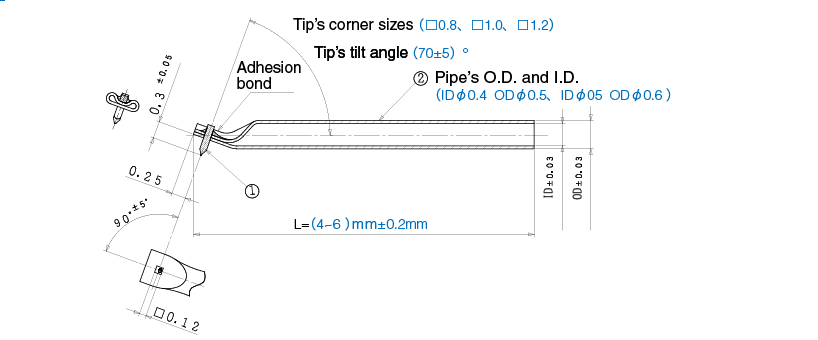
Boron stylus cantilever specifications
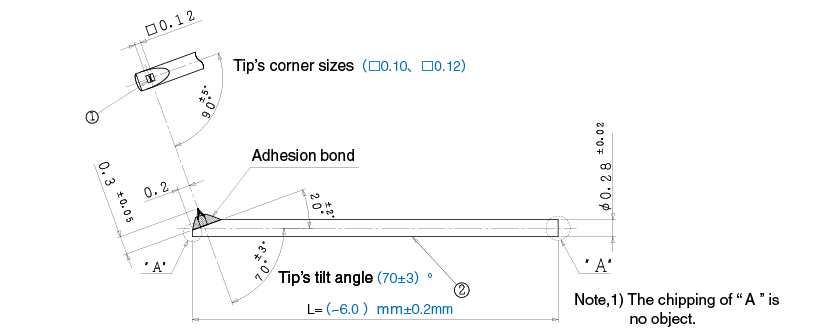
Sapphire / Ruby stylus cantilever specifications
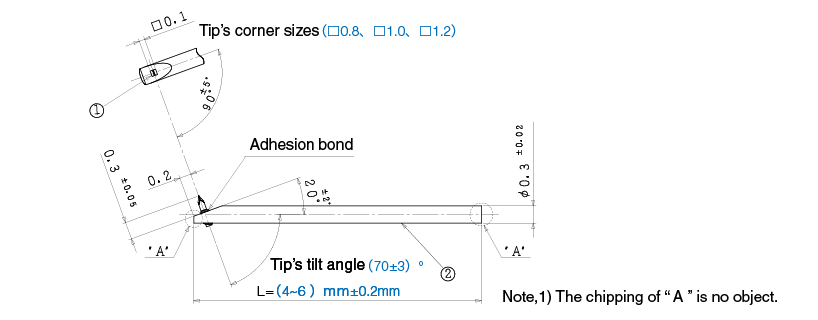
Diamond stylus cantilever specifications
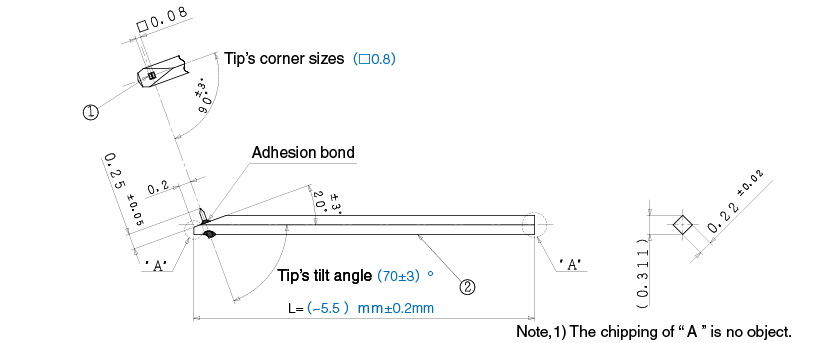
Zirconia stylus cantilever specifications
